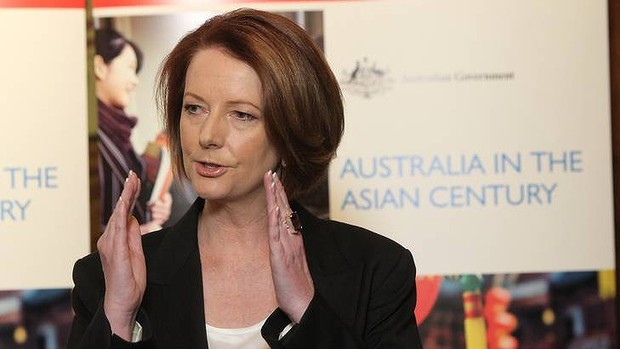Debate rages over the white paper
By Rekha Bhattacharjee
It has been one week since the Australian Prime Minister Julia Gillard unveiled the ”˜Asian Century white paper’ but the debate this policy document has triggered is still raging unabated.
There would be hardly any media outlet down under which has not rolled out opinion-pieces about the much-awaited white paper which charts Australia’s comprehensive plan to benefit from, largely, India and China driven economic rise of Asia.
The policy blueprint has been hailed by some India-watchers for recognizing India as one of five key regional nations that are most important to Australia.
“The Australia in the Asian Century White Paper places India in a position of much greater significance than it has previously achieved in our national consciousness,” writes Purnendra Jain, Professor of Asian Studies at University of Adelaide.
The perceived rising stock of India in Australia has also been linked with the timing of the launching of the white paper as it came close on the heels of the Australian Prime Minister’s recent visit to the country.
There is also a general consensus that the Labor government commissioned Australia in the Asian Century white paper is a delayed acceptance of the geographic and economic reality Australia has been living with for over a decade.
“”¦ what is extraordinary is the fact that it has taken this long for an Australian government even to attempt a comprehensive and publicly-articulated plan for charting the nation’s future in the world’s most powerful, wealthy and dynamic region,” writes Rory Medcalf who is a Senior Research Fellow in Indian Strategic Affairs at the University of New South Wales.
Some political commentators have gone to the extent of calling the blueprint as a watershed in Australia’s foreign policy. The policy document, authored by Ken Henry and his team of experts, has recognized the crucial role the bilateral relations with the rising Asian powerhouses like India and China, would play in Australia’s economic future.
While most of the political pundits and economic experts have welcomed the 312-pages white paper, there are numbers of critics who are pillorying the inarguable masterstroke of the Gillard government as far as foreign policy is concerned. It is long on rhetoric, the criticism runs, but short on ideas. The critics call for a tectonic shift in the institutional culture of social, economic, and educational institutions for the Asian century.
Besides the inevitable brickbats, the Australian Prime Minister continues to get complimented for not only accepting the ”˜Asian reality’ but also embracing it with gusto.
After all, the Julia Gillard support team points out, Australian exports to Asia are a whopping 75 per cent while the imports from the neighbouring continent are far less. Australia is also urged to jump on the Asian gravy train for a simple fact that China and India are poised to push the United States over and occupy the leading positions as economic powers in the near future.
Julia Gillard commissioned policy document makes more sense if one singles out Australia’s ties with India. Australia’s economic engagement with the populous South Asian economy has been experiencing gravity defying trajectory for more than a decade now.
The two-way goods and services trade between the two countries totalled, according to Australian Bureau of Statistic figures, $20.3 billion in 2011.
In 2011-12, Australia’s goods exports to India were worth $13.1 billion or 5.0 per cent of total goods exports, making India fourth largest goods export market for Australia. The total value of the goods imported from India, on the other hand, was only $2.5 billion in 2011-12.
In the recent past, Australian government has been grilled for not doing enough to boost Australia’s relations with Asia in general and India in particular. Now the naysayers have pointed out that many Asian countries (e.g. Afghanistan, Bangladesh, Pakistan, Vietnam, etc) have not been given their due place in the Labor-commissioned white paper.
The critics have also singled out the inclusion of Hindi as one of the four priority languages with Mandarin, Japanese and Indonesian. The criticism is driven by the fact that Hindi is hardly taught as a foreign language in Australia. The Asian Studies Association of Australia may have been campaigning for its inclusion in, at least, university curriculums, but there has never been a serious effort to implement its recommendations.
Hindi’s case is also weakened for another ground reality that there is a chronic lack of professionally trained teachers for the Indian national language.
Rekha Bhattacharjee can be contacted at vijay@hotkey.net.au
Short URL: https://indiandownunder.com.au/?p=2061

